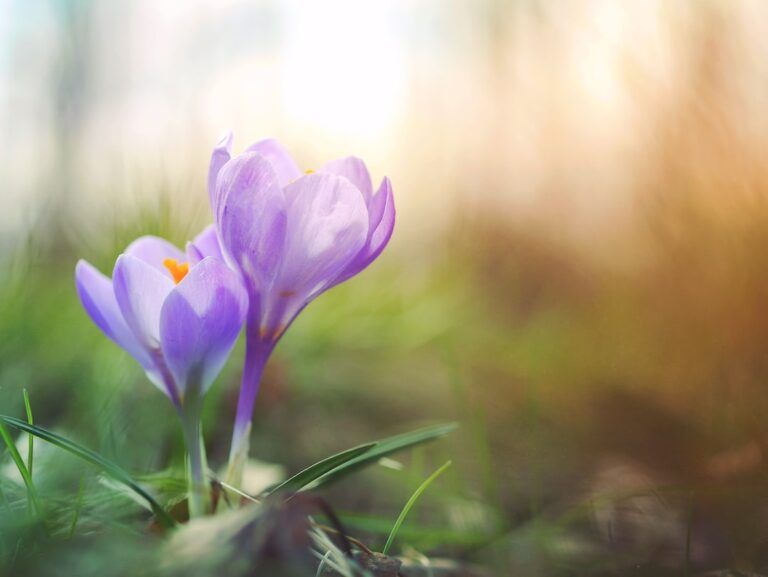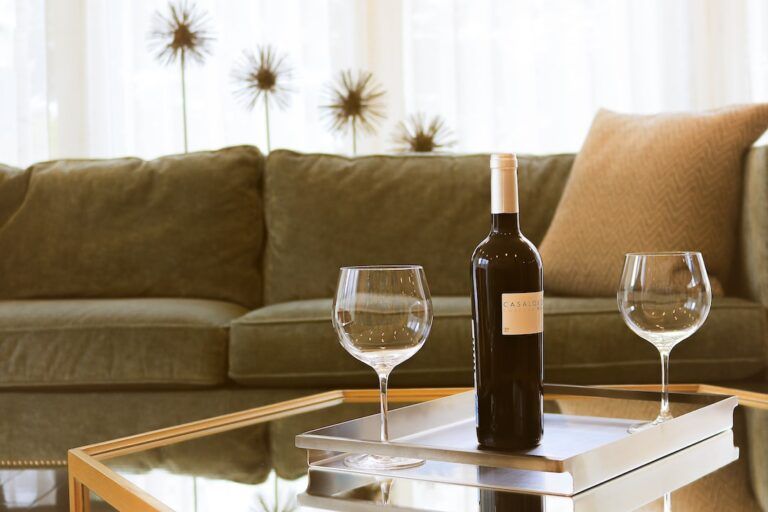Sauvignon Blanc: A crisp and refreshing white wine with flavors of citrus, green apple, and grassy notes.
Sauvignon Blanc is one of the most popular white wine varieties in the world. Known for its crisp acidity and vibrant flavors, it has gained a loyal following among wine enthusiasts. In this article, we will explore the history and origin of Sauvignon Blanc, its unique flavor profile, how to properly serve and store it, food pairings, the best regions for production, the impact of climate on its taste, the difference between oaked and unoaked styles, the health benefits of drinking it in moderation, how to choose the perfect Sauvignon Blanc for your palate, and the rise of organic and biodynamic production methods.
What is Sauvignon Blanc and where does it come from?
Sauvignon Blanc is a white grape variety that originated in the Bordeaux region of France. It is believed to have been around since at least the 18th century, although its exact origins are still debated. The grape is known for its thick skin and high acidity, which contribute to its vibrant flavors and ability to age well.
Sauvignon Blanc is now grown in many wine regions around the world, including New Zealand, California, South Africa, and Chile. Each region brings its own unique characteristics to the wine, but all Sauvignon Blancs share certain key traits. These include a pale straw color, high acidity, and a range of flavors that can include citrus, green apple, tropical fruits, and grassy notes.
The unique flavor profile of Sauvignon Blanc: citrus, green apple, and grassy notes
One of the defining characteristics of Sauvignon Blanc is its distinct flavor profile. It is known for its bright acidity and vibrant flavors that can range from citrus fruits like lemon and grapefruit to green apple and tropical fruits like passionfruit and pineapple. These flavors are often accompanied by herbaceous or grassy notes that add complexity to the wine.
The unique flavor profile of Sauvignon Blanc is a result of several factors. First, the grape itself has naturally high acidity, which gives the wine its crisp and refreshing character. Second, the climate and soil in which the grapes are grown play a significant role in shaping the flavors. For example, Sauvignon Blanc from cooler climates like New Zealand tends to have more pronounced citrus and herbaceous notes, while wines from warmer regions like California may exhibit riper fruit flavors.
How to properly serve and store Sauvignon Blanc
To fully enjoy the flavors and aromas of Sauvignon Blanc, it is important to serve it at the proper temperature and in the right glassware. The ideal serving temperature for Sauvignon Blanc is between 45-50°F (7-10°C). This allows the wine to retain its crispness and acidity while also allowing the flavors to shine.
When it comes to glassware, a medium-sized white wine glass with a slightly tapered rim is recommended for Sauvignon Blanc. This shape helps to concentrate the aromas and direct them towards the nose, enhancing the overall tasting experience.
In terms of storage, Sauvignon Blanc is best consumed within a few years of release. However, if you do want to age it, it is important to store it properly. Keep the bottles in a cool, dark place with a consistent temperature and humidity level. Avoid storing them in direct sunlight or near sources of heat, as this can cause the wine to spoil.
Sauvignon Blanc food pairings: from seafood to salads and beyond
Sauvignon Blanc is an incredibly versatile wine when it comes to food pairings. Its high acidity and vibrant flavors make it an excellent match for a wide range of dishes. It pairs particularly well with seafood, thanks to its citrusy and herbaceous notes that complement the flavors of fish and shellfish.
Some classic seafood pairings for Sauvignon Blanc include oysters, grilled shrimp, and ceviche. The wine’s acidity helps to cut through the richness of these dishes and cleanse the palate. Sauvignon Blanc also pairs well with salads, especially those that feature tangy dressings or goat cheese.
In addition to seafood and salads, Sauvignon Blanc can also be enjoyed with a variety of other dishes. It pairs well with light poultry dishes like roasted chicken or turkey, as well as vegetarian dishes like grilled vegetables or pasta primavera. The wine’s acidity and vibrant flavors can also stand up to spicy foods, making it a great choice for Thai or Mexican cuisine.
The best regions for Sauvignon Blanc production around the world

Sauvignon Blanc is grown in many wine regions around the world, but there are a few that are particularly renowned for their production of this grape variety. One of the most famous regions for Sauvignon Blanc is Marlborough in New Zealand. The cool climate and unique soil composition of this region produce wines with intense citrus and tropical fruit flavors.
Another notable region for Sauvignon Blanc is the Loire Valley in France, particularly the sub-regions of Sancerre and Pouilly-Fumé. These wines are known for their flinty minerality and crisp acidity. California’s Napa Valley and Sonoma County are also known for producing high-quality Sauvignon Blanc, with flavors that range from citrus to tropical fruits.
Other regions that produce excellent Sauvignon Blanc include South Africa’s Western Cape, Chile’s Casablanca Valley, and Australia’s Adelaide Hills. Each region brings its own unique characteristics to the wine, making it an exciting grape variety to explore.
How climate affects the taste of Sauvignon Blanc
Climate plays a significant role in shaping the flavors of Sauvignon Blanc. The grape thrives in cooler climates, where it can retain its acidity and develop vibrant flavors. In warmer climates, the grapes can ripen too quickly, resulting in wines that are less acidic and have riper fruit flavors.
Cooler climate Sauvignon Blancs, such as those from New Zealand and the Loire Valley, tend to have more pronounced citrus and herbaceous notes. These wines are often described as having a “green” or “grassy” character. They are known for their bright acidity and refreshing nature.
In contrast, Sauvignon Blanc from warmer regions like California and Australia tends to have riper fruit flavors like melon, peach, and tropical fruits. These wines may still have some acidity, but it is often less pronounced than in cooler climate examples.
The difference between oaked and unoaked Sauvignon Blanc
Sauvignon Blanc can be made in both oaked and unoaked styles, each with its own distinct flavor profile. Unoaked Sauvignon Blanc is typically fermented and aged in stainless steel tanks or neutral oak barrels. This allows the wine to retain its fresh and vibrant flavors without any influence from oak.
Unoaked Sauvignon Blanc is known for its crisp acidity, bright fruit flavors, and herbaceous notes. It is often described as being more focused on the primary fruit characteristics of the grape, with flavors of citrus, green apple, and tropical fruits taking center stage.
On the other hand, oaked Sauvignon Blanc is fermented and aged in oak barrels, which impart additional flavors and textures to the wine. Oak aging can add complexity and richness to Sauvignon Blanc, with flavors of vanilla, toast, and spice complementing the fruit characteristics.
Oaked Sauvignon Blanc is often fuller-bodied and has a creamier texture compared to its unoaked counterpart. It can also develop more complex aromas with age. However, it is important to note that not all Sauvignon Blanc is suitable for oak aging, as the grape’s natural acidity can clash with the flavors of oak.
The health benefits of drinking Sauvignon Blanc in moderation
Drinking wine in moderation has been associated with several potential health benefits. These benefits are thought to be due to the presence of antioxidants and other compounds in wine, particularly red wine. However, white wines like Sauvignon Blanc can also offer some health benefits when consumed in moderation.
One of the potential health benefits of drinking Sauvignon Blanc is its impact on heart health. Moderate wine consumption has been linked to a reduced risk of heart disease, thanks to its ability to increase levels of high-density lipoprotein (HDL) cholesterol, also known as “good” cholesterol.
Sauvignon Blanc also contains a compound called resveratrol, which has been shown to have anti-inflammatory and antioxidant properties. Resveratrol is found in the skins of grapes and is more abundant in red wines, but it is still present in white wines like Sauvignon Blanc.
It is important to note that these potential health benefits are associated with moderate wine consumption, which is defined as one glass per day for women and up to two glasses per day for men. Excessive alcohol consumption can have negative effects on health, so it is important to drink responsibly.
How to choose the perfect Sauvignon Blanc for your palate
Choosing the perfect Sauvignon Blanc for your palate can be a fun and rewarding experience. There are several factors to consider when selecting a bottle, including your personal taste preferences, the region of production, and the winemaking style.
If you prefer wines with bright acidity and vibrant fruit flavors, look for Sauvignon Blanc from cooler climate regions like New Zealand or the Loire Valley. These wines tend to have pronounced citrus and herbaceous notes that make them refreshing and lively.
On the other hand, if you prefer wines with riper fruit flavors and a fuller body, consider Sauvignon Blanc from warmer regions like California or Australia. These wines may have less acidity but can offer more tropical fruit flavors and a creamier texture.
It can also be helpful to consider the winemaking style when choosing a Sauvignon Blanc. If you enjoy wines with a touch of oak and additional complexity, look for oaked examples. On the other hand, if you prefer wines that showcase the pure fruit flavors of the grape, opt for unoaked Sauvignon Blanc.
Ultimately, the best way to find the perfect Sauvignon Blanc for your palate is to taste a variety of wines and explore different regions and styles. Wine tastings, either at wineries or organized events, can be a great way to discover new wines and learn more about your personal preferences.
The rise of organic and biodynamic Sauvignon Blanc production
In recent years, there has been a growing interest in organic and biodynamic winemaking practices, and Sauvignon Blanc is no exception. Organic farming involves avoiding the use of synthetic pesticides, herbicides, and fertilizers, while biodynamic farming takes it a step further by incorporating holistic principles and considering the vineyard as an interconnected ecosystem.
Organic and biodynamic practices can have several benefits for both the environment and the wine itself. By avoiding synthetic chemicals, organic and biodynamic farmers help to protect the soil, water, and biodiversity of their vineyards. These practices also promote healthier vines and can result in wines that better reflect their terroir.
Sauvignon Blanc produced using organic or biodynamic methods often exhibits more purity of fruit flavors and a greater sense of place. The wines can have a liveliness and freshness that is not always present in conventionally produced examples.
However, organic and biodynamic farming also presents challenges for winemakers. It requires more labor-intensive practices and can be more susceptible to pests and diseases. Additionally, organic and biodynamic wines may have a higher price point due to the increased costs associated with these methods.
Sauvignon Blanc is a versatile and popular white wine variety that offers a range of flavors and styles. Whether you prefer crisp and citrusy wines or those with riper fruit flavors, there is a Sauvignon Blanc out there to suit your palate. From its origins in Bordeaux to its current production in regions around the world, Sauvignon Blanc has become a beloved wine for many.
By understanding the unique flavor profile of Sauvignon Blanc, how to properly serve and store it, its food pairing potential, the best regions for production, the impact of climate on its taste, the difference between oaked and unoaked styles, the health benefits of moderate consumption, how to choose the perfect bottle, and the rise of organic and biodynamic production methods, you can enhance your appreciation for this popular white wine variety. So next time you’re in the mood for a refreshing and vibrant white wine, reach for a bottle of Sauvignon Blanc and enjoy all that it has to offer.
If you’re a fan of Sauvignon Blanc, you’ll want to make sure you’re storing it properly to preserve its crisp and refreshing flavors. Check out this informative article on wine storage temperature and humidity from Wine Hardware. It provides valuable insights on how to create the perfect environment for your favorite white wines, ensuring they stay at their best for longer. Read more
FAQs
What is Sauvignon Blanc?
Sauvignon Blanc is a white wine grape variety that is grown in many wine-producing regions around the world.
What are the flavors of Sauvignon Blanc?
Sauvignon Blanc is known for its crisp and refreshing taste with flavors of citrus, green apple, and grassy notes.
What foods pair well with Sauvignon Blanc?
Sauvignon Blanc pairs well with a variety of foods, including seafood, salads, and light pasta dishes.
What is the alcohol content of Sauvignon Blanc?
The alcohol content of Sauvignon Blanc can vary, but it typically ranges from 11% to 14%.
What is the ideal serving temperature for Sauvignon Blanc?
The ideal serving temperature for Sauvignon Blanc is between 45°F and 50°F (7°C and 10°C).
What are some popular regions for Sauvignon Blanc production?
Sauvignon Blanc is produced in many regions around the world, but some of the most popular regions include France’s Loire Valley, New Zealand’s Marlborough region, and California’s Napa Valley.







